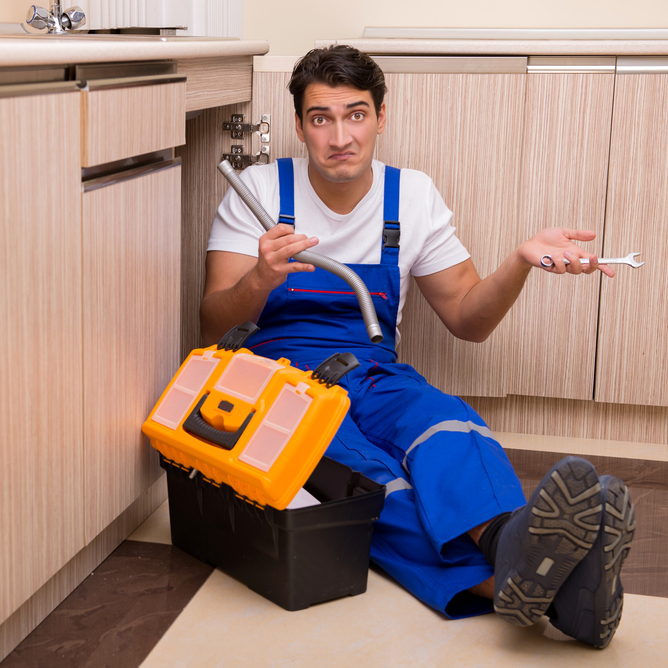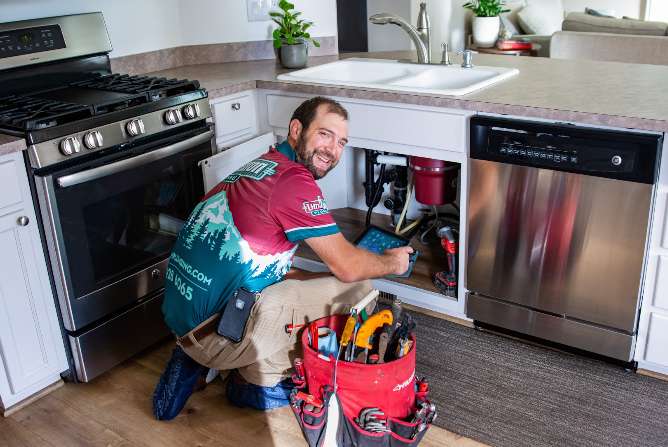When to Do It Yourself and When to Consult a Plumbing Professional
When to Do It Yourself and When to Consult a Plumbing Professional
Blog Article
Just about every person will have their own individual perception when it comes to When to DIY and When to Call in the Plumbing Pros.

Intro
Pipes problems can vary from small inconveniences to major frustrations, usually triggering homeowners to determine in between taking on the issue themselves or calling a professional plumbing technician. Knowing when to DIY and when to look for specialist assistance can save time, cash, and stop possible calamities. This post checks out the factors to think about when making this critical choice.
Advantages of DIY Pipes
Handling plumbing tasks yourself can be fulfilling in numerous ways, particularly for less complex jobs.
Expense Savings
DIY plumbing jobs commonly save cash by preventing expert service fees. Jobs like dealing with minor leakages, changing faucets, or installing new showerheads are instances where homeowners can handle repair work without employing a plumbing technician.
Ability Enhancement
Participating in DIY plumbing supplies an opportunity to find out and boost functional skills. Basic jobs equip property owners to understand their plumbing systems far better and get confidence in taking care of little repairs individually.
Risks of Do It Yourself Pipes
While DIY jobs offer advantages, certain dangers should be meticulously taken into consideration before attempting repair services.
Complexity of Tasks
Some pipes concerns require specialized expertise and tools past typical house owner capacities. Mishandling intricate problems can result in additional damages and pricey repairs.
Security Issues
Dealing with pipes systems involves risks such as exposure to water damage, potential for electric risks, and taking care of devices incorrectly. Safety precautions have to be observed to prevent accidents and make certain efficient repair work.
Indicators to Call an Expert Plumbing Technician
Acknowledging when a pipes problem surpasses DIY capacities is important to avoid intensifying troubles.
Indications of Facility Issues
Instances include:
Motivate professional intervention is required to resolve these concerns efficiently and lessen damages.
DIY Plumbing Tips
For successful do it yourself plumbing, it's necessary to be prepared with the right devices and follow proper procedures.
Basic Devices and Materials
Secret devices for do it yourself plumbing:
Step-by-Step Guides
Clear directions make sure risk-free and reliable DIY repair work:
Selecting the Right Time to Do It Yourself
Figuring out when to tackle plumbing jobs yourself calls for evaluating both the intricacy of the issue and individual convenience levels.
Analysis Checklist
Think about:
When to Definitely Call a Professional
Particular scenarios require prompt experienced interest to stop extensive damage or safety and security risks.
Examples include:
Searching for and Working With an Expert Plumbing Technician
Selecting a qualified plumbing professional guarantees trusted service and peace of mind in solving plumbing issues.
Criteria for Choice
Variables to consider:
Price Evaluation: DIY vs. Professional Providers
Comparing the financial ramifications of DIY efforts versus professional plumbing services aids in making notified choices.
Financial Considerations
Assess:
Final thought
Determining whether to do it yourself or call an expert plumbing hinges on comprehending the intricacy of plumbing problems and personal capabilities. By weighing the benefits and threats, home owners can make educated selections that promote reliable maintenance and guard their homes from plumbing calamities.
DIY Plumbing Projects: What Homeowners Can Do and When to Call a Professional
Welcome to our comprehensive guide on DIY plumbing projects. In this blog post, we aim to empower homeowners with the knowledge and skills to tackle basic plumbing tasks around the house. From unclogging drains to fixing a leaky faucet, we’ll walk you through step-by-step instructions on how to handle these common issues.
However, not all plumbing problems can or should be solved with a DIY approach. Recognizing when a problem is beyond your skill level and requires professional intervention is just as important as knowing how to perform basic tasks. We’ll also discuss the signs that indicate it’s time to put down your tools and pick up the phone to call a professional plumber. By understanding when to DIY and when to call a professional, you can save time, avoid potential disasters, and ensure your home’s plumbing system remains in top shape.
Understanding Plumbing Basics
Before we dive into the DIY projects, let’s take a moment to understand the basics of your home’s plumbing system. A typical residential plumbing system consists of two major components: the water supply system, which brings fresh water into your home, and the drainage system, which removes waste water. These systems are made up of a network of pipes, valves, and fixtures that work together to deliver clean water and dispose of waste efficiently.
Regular maintenance of your plumbing system is crucial to prevent minor issues from escalating into major problems. This includes tasks like checking for leaks, removing minor clogs, and ensuring your pipes are insulated for winter. By performing these tasks regularly, you can extend the lifespan of your plumbing system, save money on water bills, and maintain the comfort and hygiene of your home.
In the following sections, we’ll explore some common DIY plumbing projects that homeowners can handle, as well as situations that require the expertise of a professional plumber. Whether you’re a seasoned DIY enthusiast or a beginner, this guide will provide you with valuable insights into the world of home plumbing.
DIY Plumbing Projects Homeowners Can Handle
Plumbing may seem intimidating, but there are several tasks that homeowners can confidently tackle with a little guidance and the right tools. Here are a few common issues you might encounter and how to address them.
Unclogging Drains
Use a Plunger: This is your first line of defense. A good old-fashioned plunger can dislodge the obstruction and clear the drain in many cases. Try a Plumber’s Snake or Hand Auger: If the plunger doesn’t work, a plumber’s snake or hand auger can reach deeper into the pipe to break up the clog. Use a Drain Cleaner: If physical methods fail, a chemical drain cleaner can dissolve the clog. However, use these products sparingly as they can damage your pipes if overused.

I recently found that entry on when looking around the search engines. Do you know about another individual who is interested in the topic? Feel free to share it. Thanks a bunch for being here. Revisit us soon.
Call Today Report this page